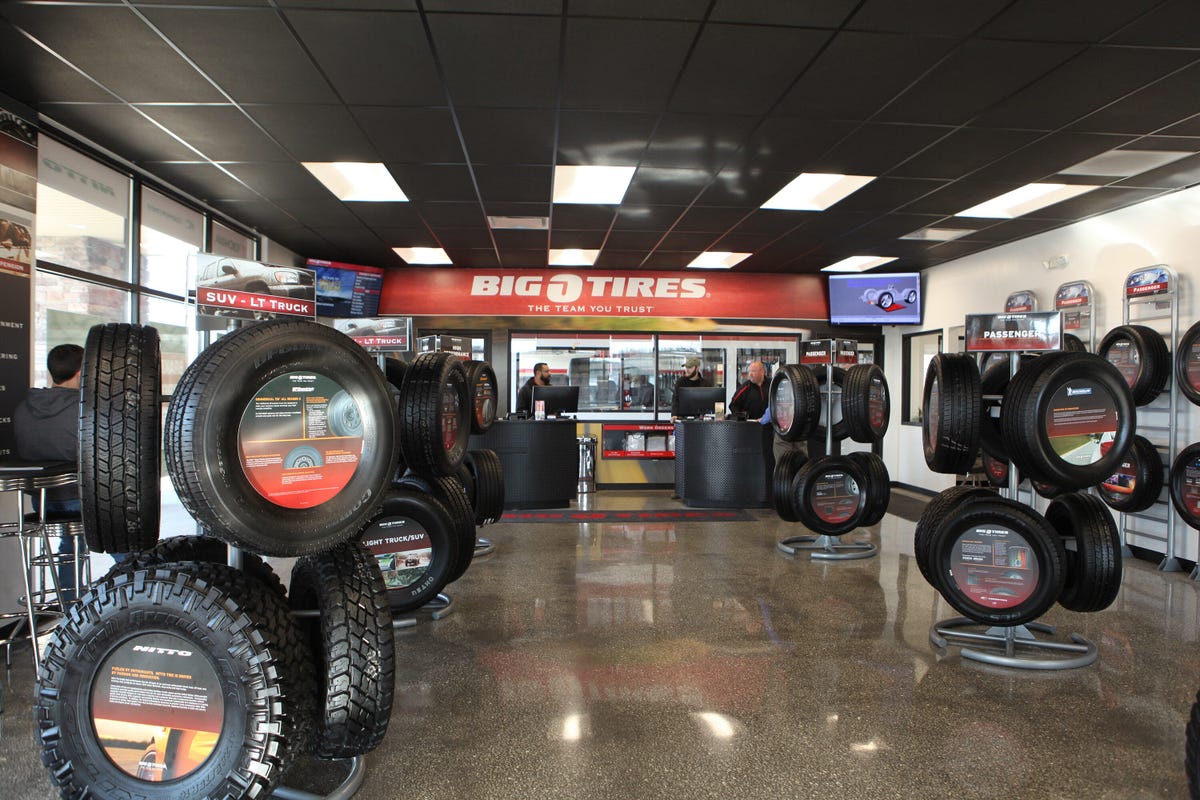Tire Service: Comprehending Tire Stress Surveillance Systems
Understanding Tire Stress Tracking Solutions (TPMS) is a vital element of preserving ideal vehicle efficiency and safety and security when driving. With developments in auto innovation, TPMS has become a standard function in contemporary vehicles, giving real-time info on tire pressure levels. Delving much deeper into the details of TPMS, one can discover the various parts that compose this system and the significance of each in guaranteeing exact monitoring. From straight to indirect TPMS systems, the landscape of tire pressure surveillance is varied, each with its distinct collection of factors to consider and benefits. Remain tuned to unravel the intricacies of TPMS, from maintenance ideas to the undeniable benefits of maintaining your tires correctly pumped up. tire shop morris.

Relevance of TPMS
The importance of Tire Pressure Surveillance Systems (TPMS) depends on their ability to enhance car security and efficiency through real-time tracking of tire stress degrees. Keeping the proper tire pressure is critical for guaranteeing ideal handling, braking, and general security of a lorry. TPMS provides chauffeurs with instant comments on any type of overinflated or underinflated tires, allowing for timely modifications to be made.
Parts of TPMS
Comprising various crucial aspects, a Tire Pressure Surveillance System (TPMS) works as a sophisticated safety attribute in contemporary lorries. The primary components of a TPMS consist of sensors, a control component, and a warning indication. Sensors are generally located in the tire valve stem or attached to the wheel setting up, where they measure tire stress and transmit information to the control module. The control component processes this info and triggers a caution if it detects substantially low stress in any one of the tires. The caution indicator, usually a sign on the control panel, alerts the motorist to examine the affected tire or tires. Some progressed TPMS designs likewise present the actual tire pressure analyses for every tire, giving chauffeurs with real-time info to make certain optimal tire performance and safety. By monitoring tire pressure constantly, TPMS assists protect against crashes, decreases tire wear, and enhances gas performance, making it a crucial component for automobile safety and security and efficiency.
Kinds Of TPMS

On the other hand, indirect TPMS relies upon the automobile's wheel speed sensing units to keep track of tire stress. This system detects underinflation by contrasting the rotational rates of the wheels. Indirect TPMS is less pricey than direct TPMS, as it makes use of existing sensors within the car.
While straight TPMS provides extra accurate readings, indirect TPMS is less complex in design and typically needs much less maintenance. Both systems have their restrictions and benefits, and the choice between them usually relies on aspects such as price, vehicle make, and personal choice. Understanding the differences between these 2 types of TPMS can assist lorry owners make informed decisions relating to tire upkeep and security.
TPMS Maintenance Tips
Reliable upkeep of TPMS is essential for guaranteeing ideal efficiency and safety and security of the original source your vehicle. Consistently checking the TPMS sensors for any kind of damages or corrosion is vital. Ensure that the sensors are clean and complimentary from particles that might hinder their performance. In addition, it is recommended to inspect the sensor batteries periodically and replace them as needed to ensure accurate readings. Conduct routine examine the tire pressure degrees and contrast them with the TPMS analyses to guarantee they are regular. Rectify the system following the producer's guidelines if there are any discrepancies. Throughout tire turning or replacement, make sure that the TPMS parts are dealt with very carefully to avoid any possible damages. Lastly, if the TPMS alerting light brightens on the dashboard, address the concern immediately by checking the tire pressures and the general system for any mistakes. By adhering to these maintenance pointers, you can extend the lifespan of your TPMS and improve the safety of your driving experience.
Advantages of Proper Tire Stress
Preserving appropriate tire pressure, as stressed in TPMS Upkeep Tips, is vital for reaping the many advantages linked with optimum tire pressure levels. Among the key benefits of maintaining the right tire stress is improved fuel effectiveness. When tires are properly blown up, there is less moving resistance, bring about better fuel economic climate. Furthermore, correct tire pressure makes sure also tire wear, expanding the lifespan of the tires and advertising safer driving conditions. With the ideal tire stress, lorries also have better handling and traction, specifically in damaging weather conditions. This can enhance overall driving efficiency and security for the driver and passengers. Additionally, maintaining optimal tire stress can add to a smoother and more comfortable ride by decreasing vibrations and noise triggered by underinflated tires. Finally, the advantages of correct tire pressure surpass just tire durability; they include enhanced gas performance, boosted safety and security, far better automobile efficiency, and overall driving comfort.
Final Thought
Finally, understanding tire stress monitoring systems (TPMS) is crucial for keeping optimal tire stress and making sure car safety and security. By acknowledging the importance of TPMS, knowing with its components, understanding the various kinds readily available, adhering to correct maintenance pointers, and understanding the benefits see post of preserving proper tire pressure, vehicle drivers can improve their driving experience and lengthen the lifespan of their tires. Appropriate tire stress is essential to reliable and safe automobile procedure.
